How to create a bouncing building effect in 3D
Glowfrog walks through an explosive sequence for innovative children's TV show Quarks.
Quarks! is a drama series for children that takes place exists in the forms of TV show, online hub, app, book and merchandise. It stars a group of teenage pranksters who can change the laws of physics, giving a a whole new dimension to childhood pranks.
Don't miss the special TV edition of 3D World magazine - out now!
"The main event is the series of short films each one about a different prank," explains Nigel Hunt, owner and creative director of Glowfrog Studios, which creates the spectacular effects for the Screen Glue series. "They are shot hand-held to feel like real video blogs and use extensive computer graphics to show the outrageous consequences when our characters meddle with the laws of nature."
The video above shows the first minute of the show, featuring an amazing 'bouncing building' effect. Below, Nigel explains how it was made...
01. Pick a building

First pick a building that you can build a 3D model from using either traditional 3D modelling and texturing or photogrammetry software to capture the building from all sides.
For this film shot we used high resolution photography shot on all sides and projected onto the 3D model.
02. Get reaction shots
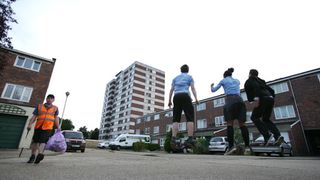
Get some actors to perform and react to the building. Time them to hit the ground simultaneously and the count the seconds while the building jumps and lands.
03. Position your model

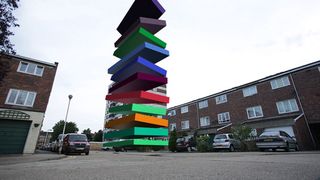
Here's a test frame showing 3D in place – used for lighting and simulating dust and debris.
For this shot we used 3DS Max with Fume FX and Thinking particles. It was rendered using Vray and comped in Nuke.
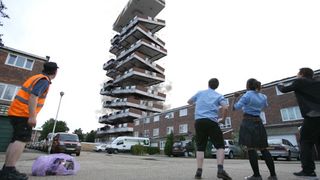
Build and position the 3D model into the shot. Use 3D camera tracking software to track the shot as there may be a small amount of movement to the camera, even if locked off.
Light your 3D building to perfectly match the background plate. Use mirror and matte balls on location to photograph or capture HDRI.
04. Add some devastation
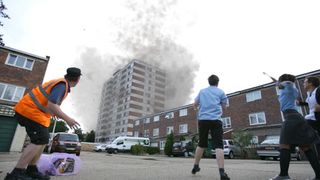
Generate debris, dust and rubble. Finally, make sure you add lots of impact camera shake to give your shot authenticity. This shot was suppose to look like the teenage pranksters had shot this using their smartphone.
Words: Nigel Hunt
Nigel Hunt is owner and creative director of Glowfrog Studios
3D World's TV special on sale now!
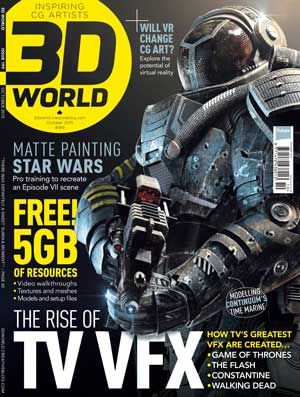
For more about creating visual effects for television, don't miss the latest issue of 3D World magazine.
On sale now, issue 199 features a 12-page feature on the rise of TV VFX, an in-depth article about hit drama Continuum, a Game of Thrones-themed tutorial, and much more. You can find out more about what's in the issue here.
Like this? Read these
- The 12 best animations of the past 20 years
- Free Photoshop brushes every creative must have
- Hands-on review: Adobe After Effects CC

Thank you for reading 5 articles this month* Join now for unlimited access
Enjoy your first month for just £1 / $1 / €1
*Read 5 free articles per month without a subscription

Join now for unlimited access
Try first month for just £1 / $1 / €1
Get the Creative Bloq Newsletter
Daily design news, reviews, how-tos and more, as picked by the editors.
The Creative Bloq team is made up of a group of design fans, and has changed and evolved since Creative Bloq began back in 2012. The current website team consists of eight full-time members of staff: Editor Georgia Coggan, Deputy Editor Rosie Hilder, Ecommerce Editor Beren Neale, Senior News Editor Daniel Piper, Editor, Digital Art and 3D Ian Dean, Tech Reviews Editor Erlingur Einarsson and Ecommerce Writer Beth Nicholls and Staff Writer Natalie Fear, as well as a roster of freelancers from around the world. The 3D World and ImagineFX magazine teams also pitch in, ensuring that content from 3D World and ImagineFX is represented on Creative Bloq.
